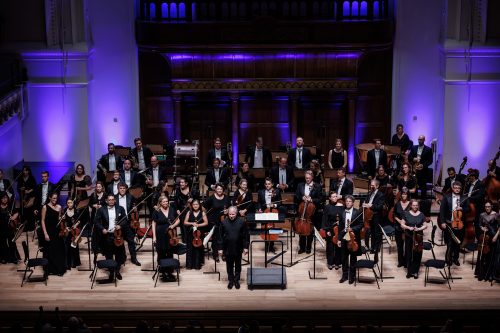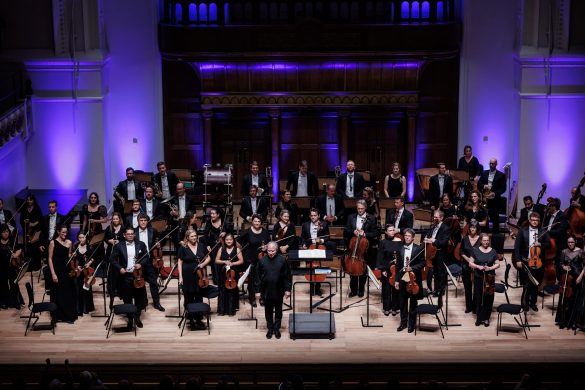 United Kingdom Mozart, Bartók, Beethoven: Pierre-Laurent Aimard (piano), Concerto Budapest Symphony Orchestra / András Keller (conductor). Cadogan Hall, London, 14.9.2023. (AK)
United Kingdom Mozart, Bartók, Beethoven: Pierre-Laurent Aimard (piano), Concerto Budapest Symphony Orchestra / András Keller (conductor). Cadogan Hall, London, 14.9.2023. (AK)

Mozart – Symphony No.40 in G minor
Bartók – Piano Concerto No.3
Beethoven – Symphony No.3 in E-flat, ‘Eroica’
The 950-capacity Cadogan Hall was packed for this concert. It is hard to tell if the audience attended because of the pull of the excellent Zurich International Orchestra Series (bringing to the UK known as well as hardly known orchestras from various corners of the world) or whether the Hungarian Concerto Budapest Symphony Orchestra is known well enough outside its homeland. Either way, the audience was fully attentive and hugely enthusiastic, demanding three encores on conclusion.
For the opening number, the Mozart symphony, the orchestra played with reduced numbers (from that of the modern symphony orchestra) and András Keller conducted without a baton. Their basic sound, even in the brisk fast movements, was gentle and velvety, reminisecent of what Mozart might have envisaged. I am not sure if Keller was best used here by conducting. Concertmaster Zsófia Környei was excellent – leading the orchestra without aggression and without swaying back and forth (as so many concertmasters do, keen to visually demonstrate their importance) – but I would have loved Keller to lead his orchestra from the first violin desk. Keller is an excellent violinist and quartet leader, leading a chamber-size orchestra for Mozart might have been closer to authenticity.
Pierre-Laurent Aimard was the soloist in Bartók’s Third Piano Concerto. The audience adored his performance, he was given a standing ovation. Rightly so, as Aimard is an excellent and well-respected pianist. He has close affinity with Hungary and Hungarian musicians, furthermore he recently recorded all three of Bartók’s piano concertos with the San Francisco Symphony and Esa Pekka-Salonen (released 15 September on Pentatone Music).
Judging by his Cadogan Hall performance – where, surprisingly, he played from sheet music and turned his pages whenever he had a free hand to do so – Aimard has a romantic as well as strongly percussive view of Bartók’s Third Piano Concerto. To my ears, he was heavy-handed, demonstrating Bartók’s all important rhythmic structure but not his lyricism. Bartók wrote this concerto for his wife Ditta, an excellent pianist with predominantly delicate touch on the keyboard. The second movement contains some beautiful dialogues between solo piano and lyrical strings, but this time they felt more like passionate and committed piano solos interspersed with orchestral accompaniment. Nevertheless, the bird call conversation motive had excellent rendering by Aimard as well as the consummate wind players of the orchestra. In the last movement I missed the Bach-like element of the fugue despite the timpani player’s lovely decrescendo lead into it. Aimard played it big, passionate, and brought the house down. Aimard’s encore – a piece by Kurtág for cimbalom, here played on the piano – was persuasive and beautiful.

Some of the ‘Eroica’ Symphony tended to be on the fast side but was, without doubt, victorious throughout. Keller’s insightful musical concepts were perfectly realised by his excellent players. With the Budapest Festival Orchestra delivering Bartók’s Third Piano Concerto as well as the ‘Eroica’ just a month earlier in London (Prom 39 review here), comparison is inevitable. To simplify that comparison, one could pinpoint beautiful lyricism on one side, and passionate drive on the other.
Keller’s three encores, persistently demanded by the Cadogan Hall audience, were three of Brahms’s Hungarian Dances. These dances were based on melodies played by Gypsy musicians with Brahms in attendance. Concerto Budapest played these encores very much in the style as Brahms might have heard the original melodies. The Cadogan Hall audience loved it.
Agnes Kory
